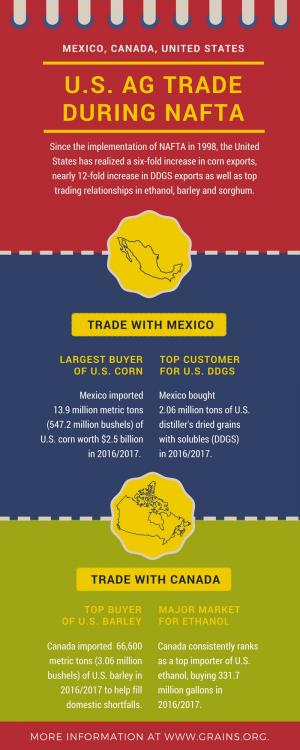The fourth round of negotiations on a revised North American Free Trade Agreement (NAFTA) began in Washington, D.C., this week with a flurry of engagement between government and industry players as tensions on all sides appeared to increase.
Several controversial proposals are expected to be discussed over the course of the round, which is set to conclude on Tuesday with a press event featuring the relevant trade ministers. These proposals include agriculture-specific issues, like a produce provision tabled in the previous round that many groups believe would open the door to damaging trade barriers. Other, broader issues are also expected to be discussed, including an investor dispute settlement proposal, rules of origin, and the potential for sunset rules that would terminate the agreement in five years.
As the uncertainty about the agreement continues, several members of the U.S. Congress spoke out this week on their standards for a new deal. Canadian Prime Minister Justin Trudeau also visited Capitol Hill and met with President Donald Trump.
Stakeholders from the Mexican grain industry traveled to Washington to monitor the talks and meet with U.S. industry. The U.S. Grains Council (USGC) facilitated a meeting between livestock division members of Mexico’s National Agricultural Council (known as CNA) representing approximately 90 percent of the livestock industry and U.S. agriculture groups including the National Corn Growers Association (NCGA), the National Sorghum Producers (NSP) and the U.S. Soybean Export Council (USSEC), focused on the ongoing negotiations.
Mexico is the largest export market for U.S. corn, purchasing 13.9 million metric tons (547.2 million bushels) worth $2.5 billion last marketing year, and the largest market for U.S. distiller’s dried grains with solubles (DDGS), purchasing 2.06 million tons in that peroid. Mexico is the second largest U.S. sorghum export market, buying 568,254 tons (22.4 million bushels).
Canada is also a dominant buyer of U.S. feed grains and value-added products, importing more than 670,000 tons (26.4 million bushels) of U.S. corn last marketing year. During that time, the country was also the largest export customer for U.S. barley (76,944 tons or 1.6 million bushels) and the second largest export customer for U.S. ethanol (331.7 million gallons).
The Council has strongly supported NAFTA since it first went into effect in 1994. The agreement has spurred significant growth in both the U.S. and Mexican feed and livestock sectors as well as deep integration of the U.S. and Mexican grain production, export and feed milling systems.
As a result, Mexican corn imports have grown by 847 percent and DDGS imports have grown by 945 percent since NAFTA was implemented.
North of the border, Canadian imports of U.S. barley and sorghum have increased 46-fold since NAFTA went into force; imports of DDGS have increased by 17-fold; and imports of ethanol have increased 172-fold.
The Council will continue to engage with negotiators meeting in Washington and work with sister organizations and customer organizations to emphasize the importance of NAFTA to the U.S. grains and biofuels industries.
More on NAFTA from the Council is here.


